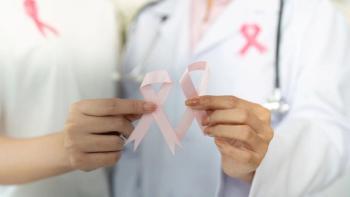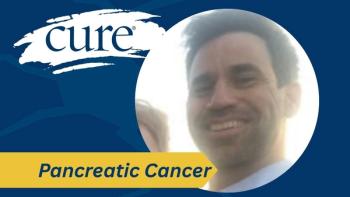
Experiencing Loneliness as a Cancer Survivor
After receiving cancer treatment and leaving the hospital, sometimes it feels like a safety net has been pulled away and loneliness sets in.
I’m taking “pen to paper” to journal about something I am currently experiencing.
This is slightly embarrassing to share, but I believe that some patients in this community may relate.
From time to time, I feel lonely.
Four years ago:
I had just gotten out of rehab after relapsing on alcohol following 25 years of sobriety due to depression. While in treatment, I was among at least 30 to 40 other patients all day, every day for months. The recovery journey was intensely social. I then went into a sober living home with other recovering addicts. The house was disgusting but I had the support.
I was beginning my job search while living in this dingy halfway house. Before I began my new life, I visited Moffitt Cancer Center for a routine checkup. I was in remission from acute myeloid leukemia (AML) that was diagnosed and treated in 2016. Dr. Sallman, my oncologist, gently informed me that my leukemia came back.
I called my older brother while I was in the room with my doctor to share the news that my AML returned. When he realized we were on speaker — before the diagnosis was even shared — he knew what he was going to hear. He was by my side from the “Hi Chris, I’m here with Dr. Sallman.”
Chris had the task of telling my three other siblings and parents about the news and my bone marrow transplant treatment plan. I was pained when I heard that they “They didn’t take the news well,” but it also warmed my heart. I didn’t feel alone.
Doctors, nurses, chaplains, social workers, brothers, sisters, parents and friends all attended to my physical and emotional well-being. Even my ex-husband flew from Chicago to Florida to visit me. My brother was helping me with my will and became a Power of Attorney to deal with my financial obligations during treatment. Social workers were connecting me to amazing Not-For-Profits that helped with my insurance co-pays. Physical therapists, hair groomers (shavers), massage therapists and volunteers popped in to guide me on the journey.
I was blessed with generous gifts of precious time taken from peoples’ busy schedules. They comforted me and provided coveted distractions from nausea and fear. Pajamas, beanies, watercolor sets and stuffed animals were presented during visits. Phone calls made the time go by.
In the meantime, nurses and medical team members were checking in on me. At Moffitt, they want to check on all of you, and not just the physical discomforts. Sometimes doctors stayed with me for up to an hour explaining procedures and side effects — drawing on all the whiteboards in the room. Their delivery was never condescending or patronizing. Male doctors never “mansplained”; they talked to me like a smart and worthy partner in the journey.
I was so grateful when I was finally sent home after a bone marrow transplant. I stayed with my brother and his wife in their lovely home for a year recuperating. My younger brother was living there as well. At follow-up appointments, I was told that I was “the poster child for bone marrow transplants!”
Eventually, I moved out and got a job. Ahhhh. Alone at last!!
I loved being able to jump into the world again and steer my own ship. I enjoyed watching whatever I wanted to watch on the TV. I liked sleeping in when I could. I enjoyed the quiet of the night.
Yesterday:
I had a bad day at work. I am a commissioned-based jewelry sales associate and personal stylist. Yesterday I received staggering returns from customers — one big return after another. It was almost laughable. This would drastically affect my paycheck. Was I being punished? As I struggled with this thought, I admonished myself for having a flimsy spirituality. “I’m so shallow!” I was upset with myself for feeding the pain with anger and frustration. I was supposed to be an Ace at Acceptance given my attendance at all those AA meetings.
I came home from work to my apartment. I sat by myself. Why am I focusing on the frustration rather than seeking peace? I have money in the bank after all.
It kinda clicked in. I realized that I was experiencing some loneliness.
I sent a quick text to my sister Amy. Immediately she shared positive reinforcement. We joked, “Are you reciting the framed motivational posters in your bedroom?”
On a bigger and broader level, loneliness after treatment is a part of many patients’ stories. While sick and in the hospital, many of us experienced a plethora of unpetitioned compassion and attention. We didn’t need to “hope” that a doctor would check in on us, or “hope” that someone was thinking about us.
Many patients with cancer who leave the hospital after being treated for cancer have a sense that their safety net has been pulled away. The calls and visits dwindle. Loneliness may set in. This may be subliminal yet powerful.
Some former caretakers or family members may think that once treatment is over, we will return to living our lives exactly like before, even though this may not be true. There may be some shifts in how we approach life’s challenges. And some new peek-a-boo scary moments of uncertainty.
I volunteer and I’m among many people at work. I go to dinner with my friends. I talk to my family.
Loneliness can still strike, albeit not too often.
I appreciate Marianne Moore’s prose: “The cure for loneliness is solitude.”When I feel at home in the here and now, I feel more at home in the world at large. Solitude gives me space to just exist without the expectations from work, family, and friends.
Resolved:
1.)Shift my self-perception from loneliness to sweet solitude.
2.) When I am vulnerable, I ASK for help. When I don’t reach out, I dip into pity-party territory.
3.) Do not beat myself up when I go through the process of dealing with disappointment or sorrow. I would be intolerable if I was a walking talking “Gratitude Gumby!” I am human.
Loneliness is sadly rampant right now.
For more news on cancer updates, research and education, don’t forget to




